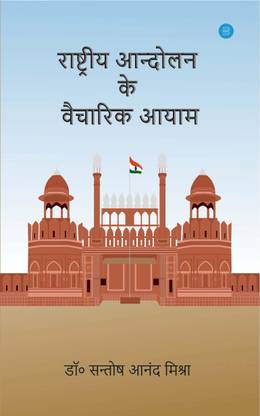Water Surrounding the Earth
(Notes)
Importance of Water
- Water is essential for life – no living being can survive without it.
- Human uses: drinking, cooking, washing, agriculture, industries, transport, recreation.
- Only 3% of total water is freshwater, rest 97% is saline (in oceans).
Distribution of Water on Earth
- Earth is called “Blue Planet” because about 71% of its surface is covered with water.
- Distribution:
- Oceans & Seas – 97%
- Glaciers & Ice caps – ~2%
- Groundwater, rivers, lakes & atmosphere – ~1%
Oceans and Seas
- Oceans are huge water bodies of salty water.
- Seas are smaller than oceans, partially enclosed by land.
- Major Oceans of the World:
- Pacific Ocean – largest & deepest
- Atlantic Ocean – busiest ocean in trade & transport
- Indian Ocean – only ocean named after a country
- Southern Ocean – encircles Antarctica
- Arctic Ocean – smallest & shallowest
Movement of Ocean Water
Ocean water is never still; it shows movements:
(a) Waves
- Up-and-down movement of surface water.
- Caused by winds, earthquakes, volcanic eruptions.
- Tsunami – giant waves caused by underwater earthquakes/volcanoes.
(b) Tides
- Rise and fall of seawater twice a day due to gravitational pull of the Moon and the Sun.
- High tide – water level rises.
- Low tide – water level falls.
- Spring tide – very high tide (Sun, Moon, Earth in one line).
- Neap tide – very low tide (Sun and Moon at right angle).
- Uses: navigation, fishing, generating tidal energy.
(c) Ocean Currents
- Streams of water moving constantly in oceans.
- Two types:
- Warm Currents (move from equator to poles, e.g., Gulf Stream).
- Cold Currents (move from poles to equator, e.g., Labrador Current).
- Influence: climate, rainfall, trade, marine life.
Importance of Oceans
- Regulate climate by distributing heat.
- Source of food, salt, minerals, oil & natural gas.
- Provide transport and trade routes.
- Tides and waves → source of tidal and wave energy.
- Support rich marine life.
Conservation of Water
- Water is limited and unevenly distributed.
- Overuse, wastage and pollution are major threats.
- Conservation Methods:
- Avoid wastage in daily life.
- Rainwater harvesting.
- Reuse & recycling of water.
- Planting more trees to conserve groundwater.
- Prevent pollution of rivers, lakes and oceans.
Quick Recap (Key Points)
- Earth → Blue Planet (71% water).
- Oceans → Pacific, Atlantic, Indian, Southern, Arctic.
- Movements → Waves, Tides, Currents.
- Freshwater only 3% → mostly in glaciers.
- Oceans vital for climate, trade, resources.
- Water conservation is necessary for future.
(D) ANSWER THE FOLLOWING QUESTION IN BRIEF-----
1.QUESTION-
On what factors does the height of a wave depend?
ANSWER-
The height of waves depends on the speed of wind and the duration of wind blowing from a particular direction.
2.QUESTION
Define an ocean current .
ANSWER
The ocean current is the continuous movement of a mass of water in a particular direction. Ocean currents are broadly of two types, ie. Cold currents and Warm currents.
3.QUESTION
How are tides caused?
ANSWER-
Tides are caused due to the gravitational pull of the moon and the sun.
4.QUESTION
Name the important components of the Water cycle.
ANSWER
The important components of water cycle are-
The sun
Ocean
Temperature etc.
5.QUESTION
Name three valuable resources which are found in abundance in the Ocean.
ANSWER-
Three valuable resources which are found in abundance in the ocean are-
Gold
Copper
Mineral Oil
(E) Answer the following questions-
1.QUESTION
How are tides useful to us?
ANSWER
Tides are useful to us in many ways high tide enables big ships to enter the harbor or soil out of the harbor, Now a days, tide energy is harnessed to generate electricity in coastal areas.
2.QUEATION
How are ocean beneficial to us in improving the quality of life?
ANSWER
Ocean are beneficial to us in improving the quality of life in many ways-
1.The oceans facilitate countries and regions to trade with one another.
2.Goods can be moved in a very large quality by ships and the transportation is cheaper than any other mode of transport.
3.The marine environment provides animal and plant life for food and trade in abundance. Some of the valuable mineral resources are also found in the ocean floor.
3.QUESTION
Explain the water cycle with the help of a diagram.
ANSWER-
Water of the oceans is converted into water vapours to the heat of the sun by the process of evaporation. The evaporated vapours rise up in the atmosphere and condense into tiny crystals of ice or droplets of water to form clouds. When the condensed ice crystals or water droplets grow in size and are unable to float, they fall down over the earth surface as precipitation. It is because of this never ending circulation that the process is described as water cycle.

4.QUESTION
Explain three effects of ocean currents.
ANSWER
Three effects of ocean currents are as follows-
1.The ocean currents play an important role in influencing the climate of the coastal region of the continents.
2.The confluence of warm and cold currents provides ideal conditional for plentiful growth of plankton, which is a good for the marine life.
3.The ocean currents also help in navigation.
5.QUESTION
Suggest four ways to help people affected by devastation due to Tsunami.
ANSWER
Government agencies, Non Governmental Organization , Resident Welfare Associations, business organizations, shopkeepers, school and colleges provided relief to the victims by donating the Money, cloths, medicines, beddings, tents etc. Media played and important role in mobilizing public help for the victims of Tsunami.















0 Comments
Thank you